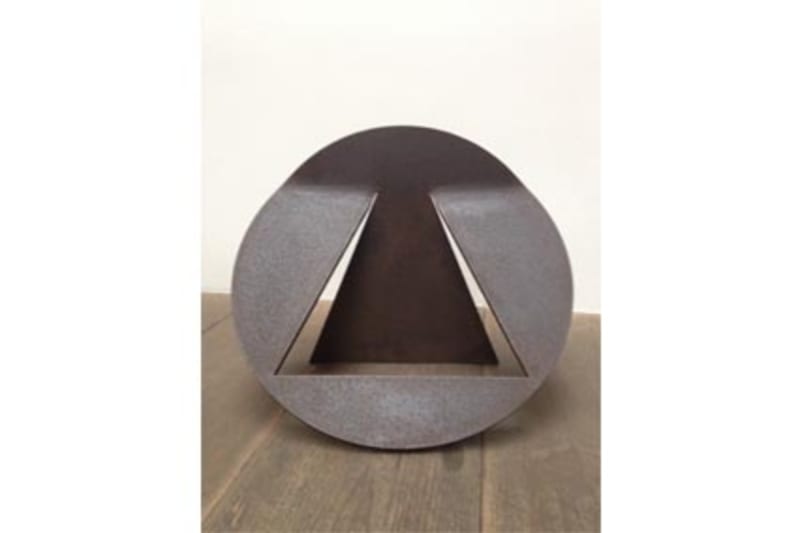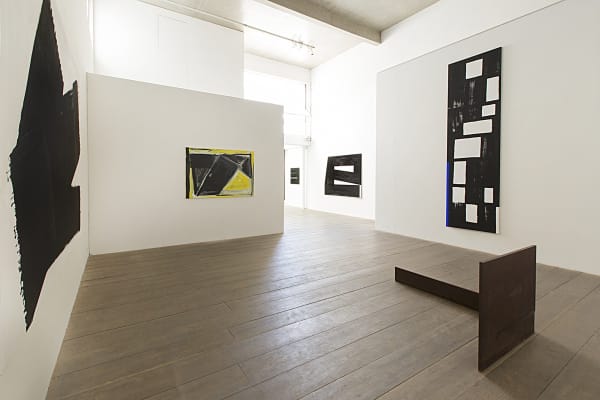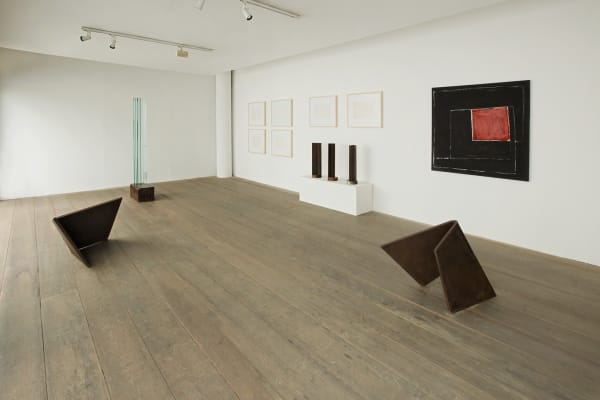AMILCAR DE CASTRO
Opening for invited guests: March 19, 11am - 5pm
Opening hours:
Monday to Friday, from 10:30am to 7pm
Saturday from 12am to 5pm
Amilcar de Castro - Transparências [Transparencies]
Rodrigo de Castro - curator - March 2016
Material: steel. Movements: the cut and the fold. Andthus, with simple movements carried out on steel plate, the artist created anunusual way of thinking about and making sculptures. Nothing is added orremoved from the material. While the plate, inert and indifferent to the world,surges into space in the third dimension, leaving behind the flat steel totransform itself into sculpture. The cut defines the structure, but it is thefold that creates the work and opens the empty spaces to be filled with light.
Amilcar de Castro dominated steel with wisdom andsensibility, creating a vigorous, intense and timeless body of work over thecourse of his journey. Timeless not because it cannot be understood today, but because the passing of time always reveals the power of history and this artists one of those who will remain forever in the History of Art.
Always thinking of other possibilities, de Castro explored a variety of materials: wood, granite, stainless steel and glass. And,material unyielding to folding led him to think of sculpting with cuts and displacements. The cuts create the lines of the work’s structure while, instead of the fold, the displacement of the blocks open up the space for light.
One chapter that stands apart, far apart, comprises his sculptures in glass. The “glass columns”, as he called them. The artist’s creative process always began with drawings and the importance of the line in his work is remarkable. It comes from far back, from the time he studied with Guignard (Alberto da Veiga Guignard, 1896-1962), when he developed the talent he had for drawing, which he never left behind. Sculptures at the time were made through a process in which the studies were drawn on card, then cut and folded in order to visualize them in space. These drawings were made with the point of view of the plane, without the perspective of depth and the cutting and folding brought form to the work in study.
The “glass columns”, made from glass plates set into wooden bases, were born of a different production process. The artist had noway of visualizing the work through a flat drawing, nor was that his focus.What he sought was the harmony of the lines that would appear in the base of the sculpture. He drew the lines in which the plates would fit in the base, and the quality of the drawing would determine whether or not the sculpture would be made.
The drawings themselves are admirable. Their geometry,which is so particular to de Castro, “finds” lines “hidden” among a universe of circumferences and elected with strong strokes on paper. Harmony and power, rhythm and sensitivity, equilibrium and creativity.
Once the sculpture is finished, with the plates embedded in the base, we lose the origin of the work. The drawings are no longer present. But, what we see is surprising. Subtle transparencies use light to draw lines and depths that change depending on where they are viewed from.The wooden base is strong and irregular. Uniting and holding the transparencies,which seem to float.
Amilcar de Castro’s vigorous creativity, from the cutting and folding of steel to the transparencies of glass, is in no way randomly inserted in time. On the contrary, de Castro created a language and used it to develop his art over the course of his life. And, as he would say,“life and art are the same thing. One does not exist without the other…”
Galeria Marília Razuk is pleased to announce a solo exhibition of Amilcar de Castro (Paraisópolis, MG,1920 - Belo Horizonte, MG, 2002) from March 19 to April 30, 2016. Curated by Rodrigo de Castro, the show reunites a selection of approximately 20 artworks,among corten steel sculptures, paintings made of acrylic on canvas and works on paper.









